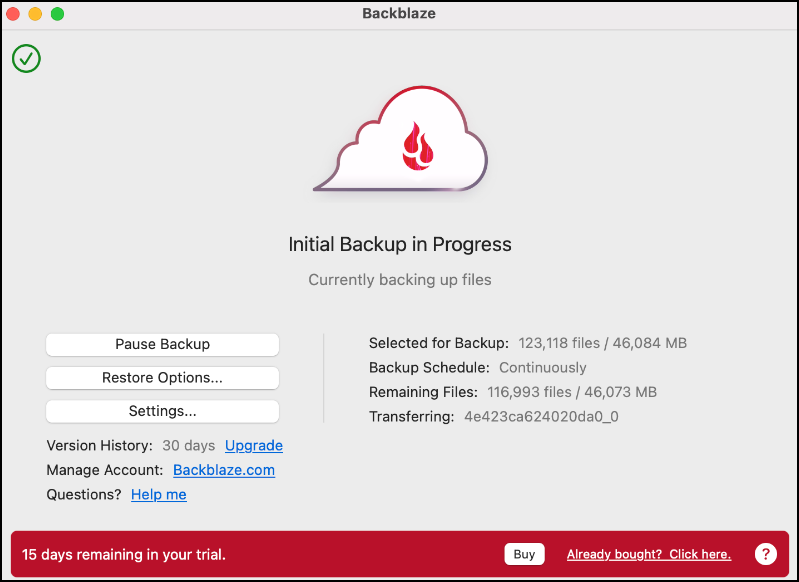- Print
- DarkLight
Inherit Backup State
- Print
- DarkLight
An Inherit Backup State resumes your old Backblaze backup on your new computer/hard drive.
There are a few reasons you may want to do an Inherit Backup State.
- You have a new computer that you want to use to continue a previous backup.
- You needed to reformat your computer or replace a hard drive.
- All of your data is the same on your computer, and you want to pick up where a previous backup left off.
- You purchased a license, but your installation shows as a 15-day trial and you want to continue a previous backup.
Do not click Already bought? Click here. You should create an Inherit Backup State here.
When you reinstall Backblaze or you install Backblaze on a new computer, a new trial is installed, regardless of whether you already have a paid subscription. This is to prevent your original backup from being overwritten, which can cause you to lose data.
Backups cannot be inherited cross-platform. A Windows backup can be inherited only by a Windows computer, and a Mac backup can be inherited only by a Mac.
For Mac users, if you used a Migration Assistant or a Time Machine backup to transfer your data from the old computer to the new computer, you must uninstall and reinstall the Backblaze software before you proceed.
If you would rather create a new backup using your pre-existing license, see Transfer a License.
For more information about creating an Inherit Backup State, click here.
Inherit Backup State Process
After the Inherit Backup State process begins, Backblaze queues up the entire contents of all of the drives that you selected for backup. You should verify that all of the desired drives are correctly connected and selected. As each file appears in the queue, they are checksummed to create a digital fingerprint. That checksum is then compared to the contents of the inherited backup. During this process, the Backblaze software reports that it is in the initial backup phase.
If the file exists on Backblaze servers, only a summary is transmitted (for example, a new name, location, or date).
If the file does not exist on Backblaze servers, the entire file is transmitted. Large files are segmented first, and each segment is checked under the same process.
If a file is in the inherited backup, but not on the new computer, it is purged from the backup, just as with files that were deleted or removed from the computer for more than 30 days or a year if you have one-year extended version history.
The end result is that files that were already backed up are not transmitted again, and any new or changed files are quickly uploaded using as little bandwidth as possible.
This image shows how the Inherit Backup State feature works.


